
#BetterWithPets: Making A Cat’s House A Home

We’ve all heard quotes about cats making a house a home. There is no question cats add a certain domestic coziness for humans but what about the cats? Learning how we can improve a cat’s environment was one of the topics that grabbed me at the recent Purina summit #BetterWithPets in Brooklyn NY.
See our post about the inspiring event I’m still buzzing about. Before I get to tips on improving a cat’s home environment, I’m excited to share my biggest takeaway from the summit about shelter cats’ environment. The aha moment arrived during the panel “Stress, Our Pets, and Us” which featured animal behaviorist Ragen McGowan, PhD; architect Heather Lewis and Dr. Tony Buffington, stress expert and professor of veterinary science.
Less stressed cats get adopted faster. There is a trend for shelters to go cage-free but there will always be a need for cages.
When we think of shelter cages, we usually think of something like this, right? Vertical metal bars.

 But what if the bars were turned on their side? It’s one of those simple but genius ideas. If this one idea was implemented as a shelter standard it would be a radical improvement for stress in cats. Now, all we have to do is make horizontal the new vertical.
But what if the bars were turned on their side? It’s one of those simple but genius ideas. If this one idea was implemented as a shelter standard it would be a radical improvement for stress in cats. Now, all we have to do is make horizontal the new vertical.
Heather Lewis of Animal Arts says, “The new generation of fear-free or stress-less cages have horizontal bars. There are studies done to show that cats do better when the bars are horizontal because it gives them unobstructed vision. Many new cages also have a flat spot on the bottom so the cat can hide and feel protected, which is comforting and gives them a feeling of control.” AnimalsArts is an architecture firm with innovative designs for shelters, veterinary clinics and pet resorts.

I’ve sourced some manufacturers, but it’s a question of supply and demand. They will customize cages, but it’s up to the shelter or clinic client to be aware enough to request it. That’s where education comes in to facilitate a quantum shift. Look for an update on some of my research into shelter cage design. If you’re interested in helping me or have ideas, email me [email protected]
The summit sparked conversations and ideas going beyond knowing life is #BetterWithPets. For me, it’s seeing something familiar with new eyes like the shelter cages I’ve seen countless times. It’s taking what we already know and tweaking it or simply committing to making our cats’ lives better. That means taking action. I invite you to look at the tips below and see how you can make changes in your home. There are more ideas at the Better With Pets link below.
A few more insightful points gleaned from the Better With Pets summit.
Dr. Marty Becker said, “There’s also been a movement in shelters to put portholes between cages so cats can have more space to walk around. Time after time, we see that cats in these environments are more comfortable and get adopted faster.”
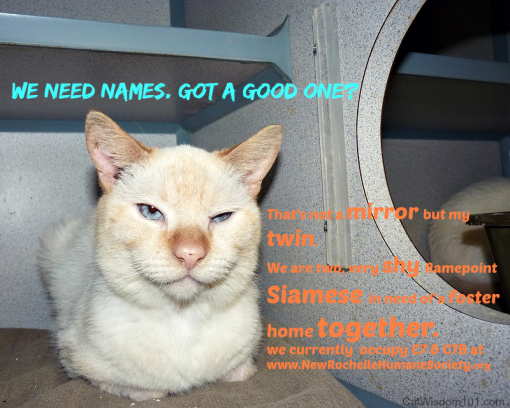
Dr. Tony Buffington wittily suggested a Goldilocks approach to reduce stress in our pet’s environment lives: not too barren, or too cluttered/choatic but a balance of just right. He went to on to say we can’t eliminate stress but work on assuring our pet’s perception of control is greater than their perception of threat”
Heather Lewis, architect and co-founder of Animal Arts” added, Pets aren’t really that different than us. They don’t like loud noise, prefer environments that are quiet and smell good (or neutral), and they want to feel protected and safe. If you can rewire your brain to think and design from your pet’s perspective, you can change things that cause stress and improve their quality of life.
...Cats see completely differently from the way that humans see. They see into the ultraviolet spectrum. Animals can see and hear florescent lights flicker, which creates an unease. LED lights are exciting because they have a lot more soft lighting that is more like natural sunlight with a natural spectral distribution and is dimmable.

Long before I worked with cats, I practiced interior design. In those days, cats or dogs didn’t enter into the design equation. Perhaps they had a pretty food bowl or a bed of their own but no matter how fancy, it was geared to fit our decor with no consideration for what a pet might want or need. We didn’t know better, but we do now. And it’s a scientific fact: Cats experience stress in the wrong environment.
We now know prolonged or chronic stress lowers the immune response which can create illness in cats.
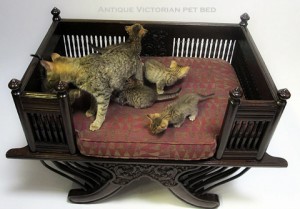
We’re sharing proven tips to enhance a cat’s environment to enhance their physical and emotional well-being. I believe in Happy Cat= Happy Home. Happy Home = Happy human.
Most of these are easy fixes that are free or don’t require a big budget.
Did you know cats prefer a clear “beeline” to the food bowl? Clean up that clutter!
Or that cats feel safer with a litter box away from high traffic areas but with a view (not a window but the ability to see who is nearby. And they feel less anxious with an open air litter box.
Cats navigate their space with their sensitive whiskers and are more comfortable eating from wide shallow bowls.
When thinking of decor choices the pastel tones in the blue/violet range are more calming for cats. Keep in mind, cat see colors differently with more muted tones. If you love red or orange, it’s a blah gray to them. Blues and violets are cooling and calming for humans and cats making it a home design win win.
In the wild, cats escape predators by climbing up trees. Provide the same sense of escape with multiple climbing shelves on different levels.

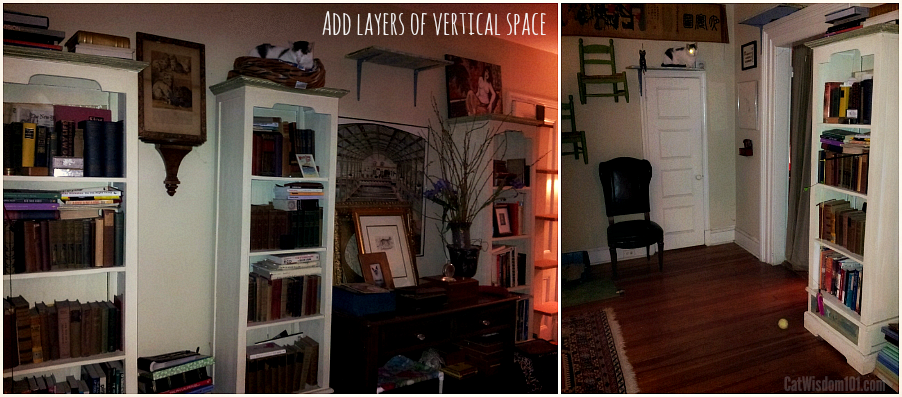
It’s stimulating to bring some of the outdoors i.e. alfalfa grass but many plants are toxic. Do your homework before turning your home into an urban jungle.
Nature is full of textures making it easy for cats to grip any surface. Indoor floors from wood to tile are smooth making it easy for kitty to skid. Add some area rugs adds textures. Sisal rugs make an enticing and inexpensive choice if your don’t mind them getting scratched up by kitty claws.
Cats need places to hide and where they can see but not be seen. Simple cardboard box with or without cut outs are a cheap thrill. We’ve reviewed every cat bed imaginable and yet cardboard boxes still rule.
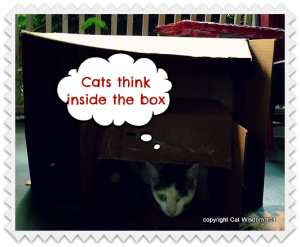
Cats are in tune with the natural cycles of the sun. Keep some blinds or drapes open to allow basking in sun puddles.

The Purina summit sparked ideas and (I hope) an on-going conversation about how we can improve the physical and emotional lives of cats. We know how clever and curious cats are, but they rely 100% on their pet parent for every aspect of their care. It’s not their fault if they get bored. A bored cat is more easily stressed and more likely to act out destructively. Prevention is so much easier and usually cheaper than any treatment. I hope you agree that a happy cat turns a house into a home, so take action: make one feline home improvement, beginning right meow.
Let us know in the comments your favorite idea for keeping your cat happy.

This post is sponsored by Purina but our views are as always, 100% our own. Cat Wisdom 101 only shares content we feel is of value to our readers.

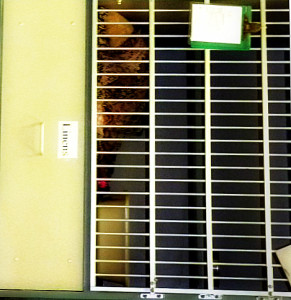 But what if the bars were turned on their side? It’s one of those simple but genius ideas. If this one idea was implemented as a shelter standard it would be a radical improvement for stress in cats. Now, all we have to do is make horizontal the new vertical.
But what if the bars were turned on their side? It’s one of those simple but genius ideas. If this one idea was implemented as a shelter standard it would be a radical improvement for stress in cats. Now, all we have to do is make horizontal the new vertical.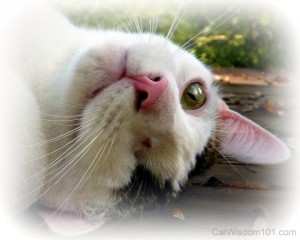


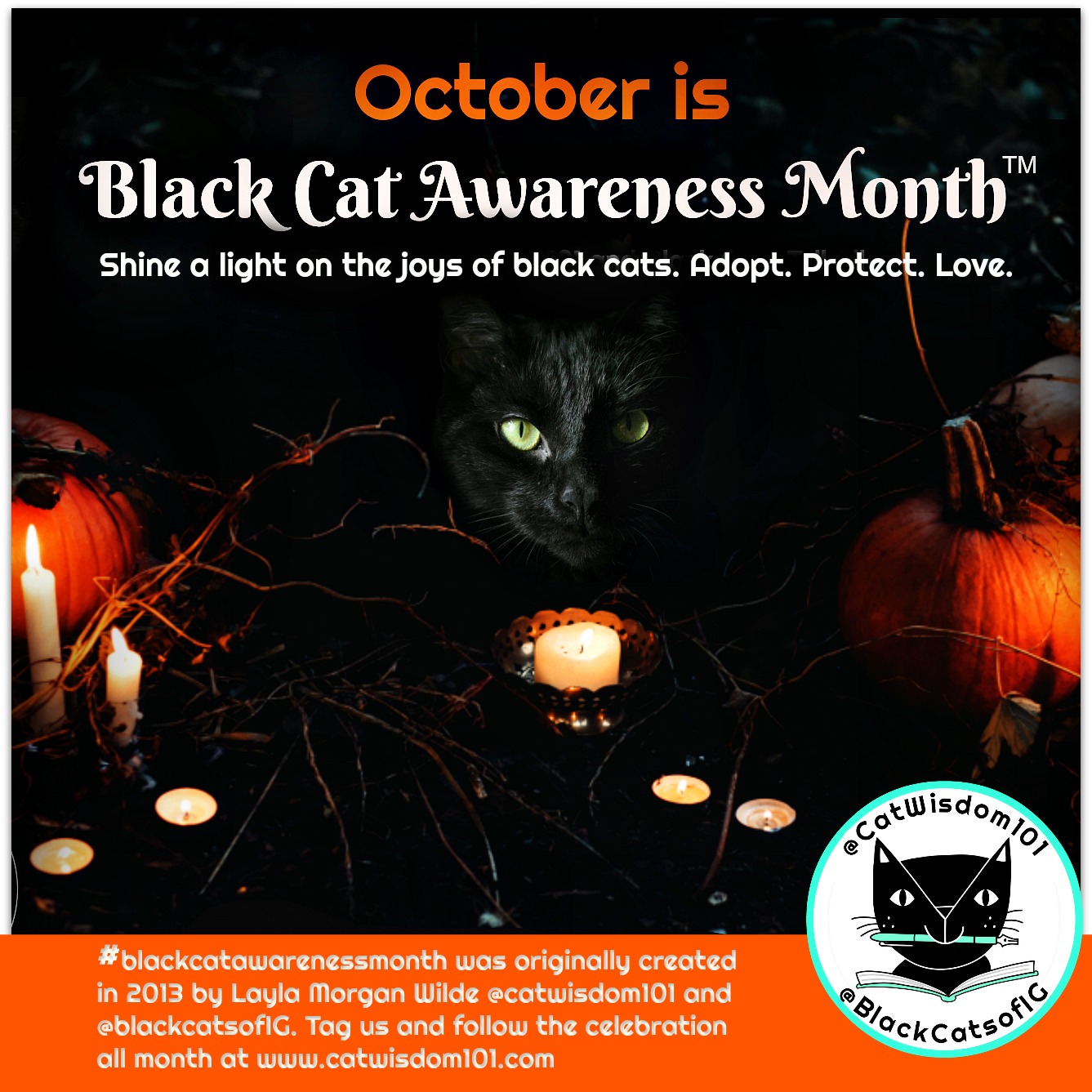
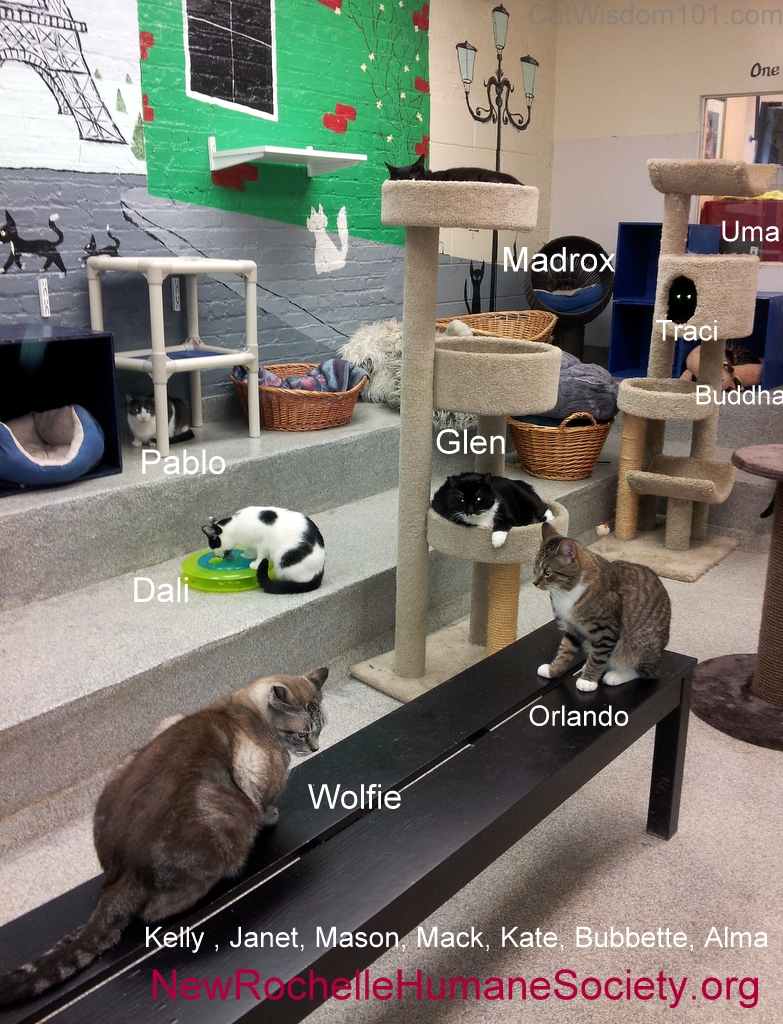
19 Comments
Sxanuxa
Mes never thinked about horizontal bars! What a great idea! Such wonderful ideas (and peoples) Thanks yous Layla, And please gives Merlin some extra special kisses from mes.
Nellie Bellie (on Mommy’s Blog)
Susan C. Willett
I love the photos from inside your home: what great ways to make a cat superhighway, with chairs and other shelves on the walls. Love it!
–Purrs (and wags) from Life with Dogs and Cats
Layla Morgan Wilde
Thanks, I believe in upcycling and using what we have in a new way.
Elaine Hutzelman
One of our shelters in Houston has plexiglass or real glass cages on the side where the public can view them, but not stick their fingers in or do any touching. The back side of the cage has bars that are only accessible by the employees for feeding and cleaning. At least this is a good solution to prevent spreading diseases.
Elaine Faber
Our local Sacramento animal shelter has 12 X 12 rooms with full glass windows, and houses 2 or 3 cats in each room, fit out with chairs, beds, toys, litter boxes, shelves and hidey places. The door is also glassed. Visitors can look into the room but doors are locked until attendant opens. No bars, just nice rooms, and this keeps germs out as well. No poking things through the bars. The rooms are placed in a circle with very large open area in front for benches, tables and great for my Black Cat’s Legacy mystery launch party last year! Hurray for Sacramento’s animal shelter. Hope all shelters can make these revisions.
Layla Morgan Wilde
Your local shelter looks great. Sadly, this kind of design is very expensive and not practical for shelters with hundreds of cats.
The Swiss Cats
Horizontal bars… it seems so easy, what a smart idea ! We hope the word spreads quickly. Purrs
da tabbies o trout towne
guys…de food serviss gurl plays harp mewsic….well, knot like HER herself, but on her phone…her haz several harp mewsic songs her plays when her knows eye am buzzed stressed…like in de car while goin two de place oh eeeeeeeeeevil….
tuna of moon
heerz two a beaked salmon kinda week oh end ! ♥♥♥
maggie
I’d never heard that about horizontal bars. Wow. I wish that cages weren’t necessary at all in shelters, but as long as they are, (due to illness, special diets, behavioral issues, need to quarantine) they should be as comfortable and stressless as possible.
Thank you.
xxoo
Summer
My human didn’t know about the horizontal bars, or the fluorescent lights until the summit – it’s so important that this type of information is spread to the shelters! No wonder cats are so stressed out when they’re in these places. It’s a very complex issue, and it seems like these environments have been working against cats in so many ways.
Ellen Pilch
Very interesting post. I always thought cats saw the brighter colors.
Cathy Keisha
Sounds like a very informative summit. Vertical bars remind me too much of jail. PTUs have horizontal bars too. Maybe they’d stress us out less is they were horizontal.
Layla Morgan Wilde
CK, that’s a great point about carriers.
Rene Agredano
LOVE your post, you captured so many fantastic details. I also had the “AH hah!” moment when the horizontal bars were discussed (yay for you for finding a pic to include, I didn’t even think about doing that!). It totally makes sense why our dog FREAKS when left in boarding kennels but does fine in home boarding situations.
The conference was amazing wasn’t it? We are so glad we went as well.
easy rider
I like this idea and I hope for a lot of happy purrs instead hisses :o) btw: Odin I wish I could get some climbing lessons… that would be great to say hell-o to the pigeons :o)
Caren Gittleman
this was superb!! Not sure if you mentioned it, but along with the horizontal-bar cages (which are genius), they said that the cages for cats should be HIGH up! You might have mentioned it and I apologize if I missed it.
Skeeter and Izzy
It is so wonderful that more attention is being paid to the well being of animals in different environments. Keep up the great work everyone! Thanks for sharing all you learn with us!
Luvs
Skeeter and Izzy and the Feral Gang + Twig & Peanut & Romeo & the Angels >^..^^..^<~
The Island Cats
The horizontal bars is such a great idea. We hope it catches on to many shelters. How great that the #BetterWithPets summit focused so much on cats and enriching our lives.
Sometimes Cats Herd You
We didn’t know that you used to be in interior design! We learned a bonus thing today.
It’s interesting that there aren’t many sources for horizontal-bar cages. Hopefully we’ll see more of them available as the word spreads that they are better for cats and demand rises. That seems like a really easy change that can be made when vets and shelters are buying cages that could really be a big benefit.